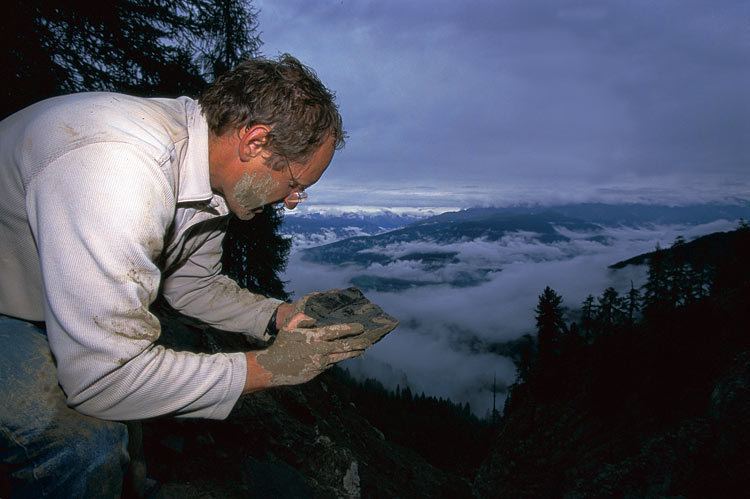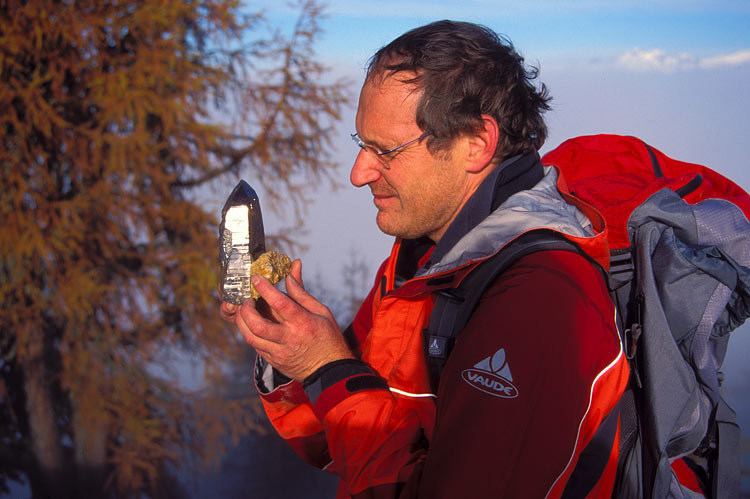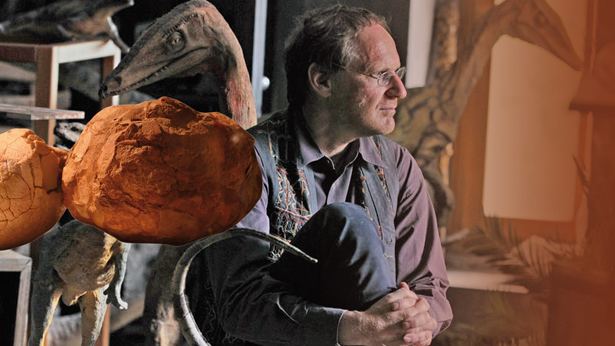Name Michael Wachtler | Role Author | |
 | ||
Books The First World War in the Alps | ||
Michael wachtler dolomiten das werden einer landschaft trailer
Michael Wachtler (born February 2, 1959 in Innichen, South Tyrol) is an author and researcher from South-Tyrol.
Contents
- Michael wachtler dolomiten das werden einer landschaft trailer
- Michael wachtler heilende natur die kraft der urpflanzen trailer
- Life
- Megachirella wachtleri
- New species of plants
- Books published in 2003 or later
- The big gold find
- Discovery of primitive dinosaur tracks
- Building the DoloMythos and Imprisonment
- Retreat to the wilderness
- Fighting against the destruction of nature
- Publications
- References

Michael wachtler heilende natur die kraft der urpflanzen trailer
Life

While a university student, he took part in expeditions into the mountains. Crystals and petrified fossils in particular aroused his interest. His teacher, Nolli Huber, fell to his death in 1984 while they were together looking for crystals. From 1980 to 1990, he was involved in the founding of the "Pustertaler Zeitung" and the "Rundschau von Vinschger", both of which are newspapers from South Tyrol.

In 1990, Wachtler discovered two new species of primitive conifers in the Dolomites, Voltziales dolomitica and Voltziales ladinica, which represent one step in the evolution of this group of plants. He also studied the petrified remains of the plant Bjuvia dolomitica, a primitive cycad, which he described together with the Dutch scientist Han van Konijnenburg - van Cittert.

During this period, he successfully published his first books and documentary films about the life of crystal hunters in the Alps and the history of the formation of the Dolomites.

In 1999, the discovery of the "Piz da Peres fossil site" in the Prags Dolomites. It was referred to as the "ancient Garden of Eden". After the great Permian-Triassic extinction event in which over 90% of all living creatures became extinct, a large number of new plants, fish, and land animals evolved in this area.
Megachirella wachtleri

In 1999, Michael Wachtler also discovered the well preserved skeleton of a small saurian that was then named Megachirella wachtleri. In a phylogenetic study published in 2013, the two Italian researchers Silvio Renesto and Massimo Bernardi confirmed that this species should be classified close to the common ancestor of the Squamata and Rhynchocephalia, i.e. of the snakes and lizards, one of the most common groups of reptiles encountered today.
New species of plants
A primitive fern found by Wachtler in 2005 and which he, Han van Konijnenburg - van Cittert, and Evelyn Kustatscher named Gordonopteris lorigae in honor of the Scottish researcher Maria Ogilvie-Gordon and the Italian researcher Carmela Loriga-Broglio. Michael Wachtler subsequently described a plethora of new fossilized plants in his book "The Genesis of Plants". The fact that modern cycads (Bjuvia) were found together next to extremely primordial clubmoss trees (Lycopia) aroused the interest of the scientific community. The Austrian paleontologist Georg Kandutsch named this genus of ferns Wachtleria after him. They are an ancestor of the Lindsaeaceae still encountered today in the southern hemisphere.
Books published in 2003 or later
Starting in the year 2003, Michael Wachtler published popular books about the First World War in the Alps. However, he increasingly turned to writing social criticism. In 2006, "Die Seele der Natur" (The Soul of Nature) appeared, and in 2007, he published a book entitled "Tirol-Saga" (Tyrolean Saga) which was subtitled "Historia eines mysteriösen Volken von Wilden. Von Raufbold Ötzis bitterem Ende bis zu den Helden der Schmerzen" (History of a Mysterious People of Savages. From the Sad End of the Quarrelsome Ötzi to the Heroes of Pain).
The big gold find
Together with Mario and Lino Pallaoro, Federico Morelli, and Georg Kandutsch, Wachtler found gold several times in Brusson in the Aosta Valley between 2003 and 2008 that would go down in history as the largest gold finds in the Alps of the modern age. At one location, he discovered 20 kilograms of pure gold. The treasure map of an old mineralogist gave him the clues he needed.
Discovery of primitive dinosaur tracks
In 2007 on the Piz da Peres in the Prags Dolomites, he found the well preserved footprints of primitive dinosaurs dating as far back as 240 million years ago. Together with Marco Avanzini, they were scientifically described as "Sphingopus ladinicus". In addition, he took part in various expeditions that led him to the South Seas, the Danakil Depression in Ethiopia, the Comoros, the Kamchatka Peninsula, and even Venezuela.
Building the DoloMythos and Imprisonment
Wachtler simultaneously focused on organizing exhibitions and concepts for museums. Together with Georg Kandutsch from Carinthia, he built the first "Treasure chests of nature", a series of museums, the most famous of which is the "Dolomythos" museum in Michael Wachtler's castle-like villa in Innichen. It illustrates the history of the Dolomites from its beginnings to the present day. In December 2010, a task force of the Carabinieri confiscated 3,700 fossil finds that were stored in the Dolomythos museum. The public prosecutor's office investigated him for the illegal possession of cultural objects. Wachtler would also be accused of not having prepared the fossils properly. The state of South Tyrol in turn filed a damage claim of 204,599 euro for damaging the reputation of the state. In the first trial, Michael Wachtler was sentenced to a 10-month prison term. Wachtler regarded this sentence to be a "judgment against science".
Retreat to the wilderness
In 2011, Wachtler retreated into the remote mountains. Together with the woodsman Fèro Valentini from the Non Valley, he studied the importance of wild plants to humans. He dug in the fossil site in Tregiovo in the Italian Non Valley and described primitive ginkgo trees as well as the oldest known pines (Valentinia) from the Early Permian. With the plant "Wachtleropteris valentinii", the German researcher Thomas Perner erected a monument to the names of the two withdrawn men. In 2014, Wachtler's critical book "Gebt der Wildnis das Wilde zurück" (Give the Wilderness its Wildness Back). Together with Thomas Perner, he also described fossilised plants in the German Palatinate during the earliest stages of the Permian period over 300 million years ago, whereby the genus Perneria can probably be considered the most primitive genus of conifer known to date.
Fighting against the destruction of nature
Unimpressed by the charges brought up and the prison sentences, Michael Wachtler is considered more and more to be the "warning voice" against the destruction of nature in the Dolomites. Although the DoloMythos Museum is in danger of being closed by the authorities, he continues to fight without pause and more than ever before to raise the awareness of humans for the fragile environment.
